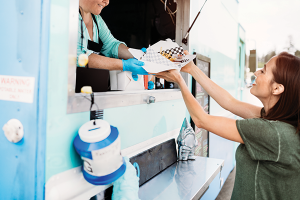Addressing areas of NFPA 58’s LP Gas Code an ongoing process

One task group is looking at a wholesale revision of food truck code requirements. Photo: RyanJLane/E+/Getty Images
My last few articles described changes and the change process for NFPA 58, the Liquefied Petroleum Gas Code. This time, I will describe some early-stage activity that will lead to changes in the next edition.
The Technical Committee on Liquefied Petroleum Gases met in February to plan for the next edition and to discuss some places where some felt the code was inadequate; concerns not addressed; confusion about the meaning of a requirement; or new technology not properly recognized. As a result, the chairman authorized continuing two working groups and added six more. Each working group is holding conference calls/video sessions and writing changes or whole new sections or chapters. I’ll summarize each group’s task.
Chapter 7 purging procedures: The origins of this concern date back to some incidents where improper purging caused severe damage and/or death. Some changes relating to purging have already been made to codes involving natural gas and propane. This group will be making sure that the purging section of the LP gas code recognizes the latest safety wisdom.
Propane-fueled on-road vehicles: These have been recognized in the last two editions of the LP gas code with their own chapter, bringing these requirements into one place. Some members think it might be better to have these rules in a standalone propane-fueled-automobile standard. There is a task group looking into asking NFPA to create this new standard.
Face seals on cylinders: There is a new requirement to inspect the face seals in most cylinder valves prior to filling the cylinders. Annex pictures and information flyers and websites help you determine when to reject a cylinder for filling. However, there are other problems, some that can cause leakage but are not identifiable by a simple visual inspection. There is a task group working on the best way to work these details into the code to help marketers identify the problems and to determine rejection criteria for denying a cylinder.
Separation distances from liquid transfer points: There are differences in the code about separation distances from the liquid transfer point to various shutoff devices for valves or electrical power. There can be confusion about what the proper distance is for a certain situation. A task group is looking at all of the separation distance requirements to see if they can be organized into a more logical set of distances.
Fire department training props: Much fire training is done using special training props to teach and practice fighting various types of propane fires or releases. Some of these are commercially available and some are do-it-yourself designs. Some of the DIY props do not meet code. One task group is looking at some of these training props to see if it might be appropriate to exempt certain aspects from having to comply with the code. Sometimes you must eliminate a certain safety device to properly replicate a failure that has to be fought. This task group has a fine line to walk to address the needs for participant safety but still allow realistic scenarios.
Food truck rules: The rules used for propane systems on food trucks were not originally designed for that application. One task group is looking at a wholesale revision of those requirements, probably creating a new chapter to address mobile food units, be they trucks, trailers, push carts or stands. There are certain code and ordinance precedents to review to see which requirements are realistic and which are not. This is one example where we are including someone in the task group who is not a member of the committee, in this case a food truck builder.
Large tank vapor openings: One task group is looking into the myriad requirements on Table 5.9.4.2 as they apply to protecting vapor openings. Some of these openings may be protected by a back-check valve or an excess-flow valve in the opening with a positive shutoff valve close by. Should they be required to have internal valves or emergency shutoff valves? Some older installations are not required to have the positive shutoff valve. The task group will work to determine if that is appropriate.
Installation of horizontal tanks: Many of us have been confused by the installation requirements for horizontal containers as stated in section 6.8.3, particularly in Table 6.8.3.2(A). One task group is taking on the challenge of clarifying these requirements.
Some concerns didn’t qualify for working-group status. These included, for example, keeping chapters 5 and 6 aligned, frequency of testing of internal valves and emergency shutdown valves, drains on pressure relief valves and providing metric equivalents for certain tables. These ideas are simple enough that an interested individual can prepare a proposal for committee review.
By the way, the pandemic caused a delay in the NFPA process, delaying the next edition to 2024. The committee’s next meeting was scheduled for mid-October. NFPA has announced there will be no more in-person committee meetings this year. Our chairman thinks our work is too complicated for a virtual meeting, so we will likely wait until 2021 for our meeting.
Richard Fredenburg is an LP gas engineer at the North Carolina Department of Agriculture and Consumer Services, Standards Division. He is also a member of NFPA’s Technical Committee on LP Gases.
















